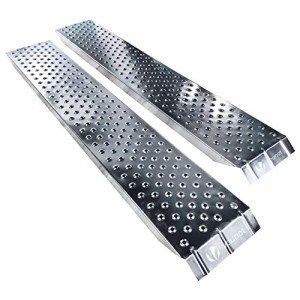Guide To Wheelchair Ramps For Steps: The Intermediate Guide For Wheelchair Ramps For Steps
Wheelchair Ramps for Steps: A Comprehensive Guide
Ease of access is an essential element of contemporary design, as it makes sure that everyone, no matter physical capability, can access structures and public areas. Wheelchair ramps are important features that facilitate this access, especially in environments where steps are present. This blog post will explore the various types of ramps, their advantages, elements to think about when choosing a ramp, and often asked questions to assist you make informed choices.
Comprehending Wheelchair Ramps
A wheelchair ramp is a likely surface area created to connect various levels, permitting individuals who utilize wheelchairs, walkers, or other mobility aids to browse steps securely. They are especially important in industrial and domestic settings, where barriers such as stairs can restrain access.
Kinds of Ramps
There are a number of kinds of wheelchair ramps available, each fit to different requirements and environments:
| Type of Ramp | Description | Ideal Use Case |
|---|---|---|
| Portable Ramp For Wheelchair Ramps | Lightweight and easy to carry | Temporary access or outdoor events |
| Threshold Ramps | Brief ramps designed for door limits | Homes with small steps or raised entrances |
| Modular Ramps | Prefabricated ramps that can be configured | Long-term options for buildings with several levels |
| Solid Ramps | Strong irreversible installations | Public buildings and industrial spaces |
| Automobile Ramps | Developed for loading and discharging vehicles | Transporting mobility equipment or individual use |
Advantages of Wheelchair Ramps
-
Increased Accessibility: Wheelchair ramps supply important access for those with mobility challenges, guaranteeing they can go into and exit buildings separately.
-
Security: By offering a safe alternative to steps, ramps assist prevent accidents that can happen when browsing stairs.
-
Improved Independence: With a wheelchair ramp, users can browse locations without support, considerably boosting their sense of autonomy.
-
Regulative Compliance: Many locations have laws needing public buildings to be available. Installing ramps can help companies meet these legal requirements.
-
Increased Property Value: Accessibility functions like ramps can make residential or commercial properties more enticing to potential buyers or occupants.
Key Considerations When Choosing a Wheelchair Ramp
Choosing the best wheelchair ramp needs mindful consideration of various aspects:
-
Length and Incline: The length of the ramp is crucial. An advised slope is 1:12 (for each inch of height, there should be at least 12 inches of ramp run). This makes sure that the ramp is not too steep.
-
Width: The ramp must be wide adequate to accommodate the wheelchair easily. The minimum width is usually 36 inches.
-
Material: Ramps come in different products, consisting of aluminum, wood, and rubber. Aluminum is durable and weather-resistant, making it perfect for outdoor use.
-
Weight Capacity: Ensure the ramp can support the weight of the wheelchair and the user. A lot of ramps have actually a defined weight limit; selecting one that surpasses awaited loads is finest.
-
Location: The placement of the ramp is vital for use. It must be located where it provides the most access and security.
-
Ease of Installation: Some ramps are Portable Ramp For Wheelchair and require no installation, while others might need expert setup. Consider how typically the ramp will be used and who will utilize it.
Ramp Installation
Setup of wheelchair ramps can vary based upon the type of ramp chosen. Portable ramps generally need little to no setup, while modular and solid ramps may need professional setup.
Installation Steps for Modular Ramps:
-
Measure the Access Point: Determine the height of the steps to compute the ramp length required.
-
Protect Permissions: Ensure you have any needed licenses or consents from your regional authorities.
-
Set up the Base: Attach the base of the ramp firmly to the ground or steps.
-
Put together the Framework: Put together the modular areas according to the manufacturer’s guidelines.
-
Look for Stability: Ensure the ramp is stable and securely connected before usage.
FAQ About Wheelchair Ramps
Q1: Do I need a license to set up a wheelchair ramp?
A: Many towns require licenses for installing wheelchair ramps, particularly irreversible structures. It’s necessary to inspect regional regulations and acquire the required approvals before installation.
Q2: How do I preserve my wheelchair ramp?
A: Maintenance will depend on the material. Frequently look for any damage, tidy the surface area to avoid slipperiness, and make sure that any bolts or anchors remain secure.
Q3: How can I ensure the ramp is safe for all users?
A: To optimize security, ensure the ramp has a non-slip surface, appropriate handrails, adequate lighting, and satisfies local structure codes for slope and width.
Q4: Are there grants available for wheelchair ramp construction?
A: Various government and nonprofit organizations provide financial help for availability restorations, including wheelchair ramps For steps ramps. Research study programs in your area or seek advice from a regional Disability Ramps advocacy group for details.

Q5: Can I use a wheelchair ramp with other mobility gadgets?
A: Yes! Many wheelchair ramps are designed to accommodate different mobility help, consisting of walkers, scooters, and strollers.
Wheelchair ramps play an important function in guaranteeing accessibility for people with mobility difficulties. When picking and installing a ramp, numerous aspects must be thought about to ensure safety, functionality, and compliance with guidelines. By providing available entrances, businesses and homeowners add to a more inclusive community. With the right information and planning, navigating steps can end up being a smooth experience for everybody.

